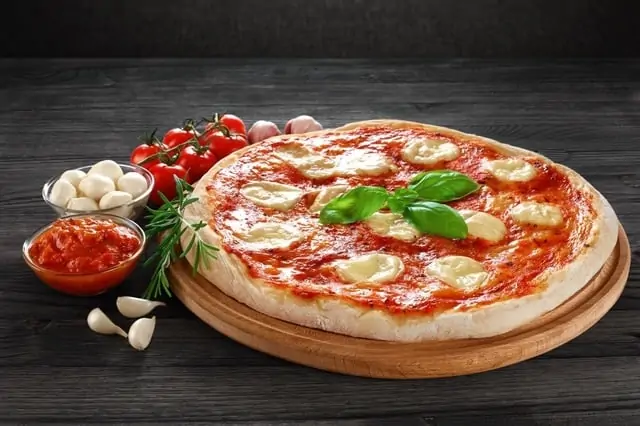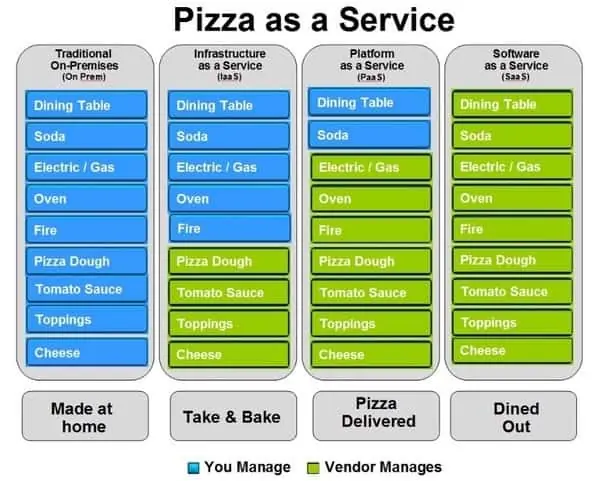I love a good pizza. I am not a big fan of deep dish Chicago style, or California style with weird ingredients.
My favorite pizza is the father of all pizzas, properly baked, Pizza Margherita with thin crust, fresh basil, tomato and mozzarella. It is a Neapolitan gem and adorned in the colors of the Italian flag.
There is an urban legend about a pizzeria chef in Naples, inventing this gem in honor of the Queen of Italy, Margherita of Savoy, and the Italian unification, hence the colors of red, white and green.
I could care less about its origin but this pizza with red plum San Marzano tomatoes, thinly sliced mozzarella, and fresh basil is a masterpiece to be respected.
Making pizza at home like a pizzaiolo was something I wanted to do for a while. At a moment of temporary insanity, right after I demolished and rebuilt my entire kitchen all by myself, I decided to make a Margherita pizza to celebrate my achievement. I searched for places for the right pizza dough and found a local organic food store. I also bought fresh basil there, but their tomatoes however, were not perfect. I did find the perfect tomatoes at a Korean grocery, 13 miles away from my house. After getting mozzarella from an Italian store, I was ready to say “facciamo la pizza” or so I thought!
Terracotta!
It means, “baked earth” in Italian. It is what most of the flower pots are made of.
A true Italian pizza requires a brick oven which was not part of my rebuilt kitchen.
To simulate the brick oven performance, my option was to find that special terracotta stone.
After buying a large floor tile from my local home improvement store, everything was in order. I put on my favorite apron, placed my floor tile on the middle rack of my oven and turned the heat to its highest setting. I then peeled the tomatoes and chopped them to smaller cubes. I made my pizza sauce from scratch by mixing garlic, olive oil, oregano, salt and black pepper. I prepared the dough, placed the toppings, put the pie over to my heated floor tile, slid it into the oven and baked it until the cheese melted and the crust is puffed.
As I counted the minutes waiting for charred spots to appear around the crust, the whole family was waiting for my masterpiece.
Then my timer beeped and Ecco qui! La mia pizza!
The pie out of the oven was no longer round, but, nevertheless, it was tasty. Not too shabby for the first time!
So, what does SaaS, software as a service, have to do with my pizza?
It was the last time I made my own pizza!
The next time I felt like celebrating an achievement with a pizza, I took the family to a good Italian Restaurant.
Rather than going through all that expense and effort to bake a pizza at home, you can always get a delicious and perfectly round pizza pie from a Pizzeria whether you live in Naples, Rome, Paris, or Brooklyn.
Getting a service from someone, who is specialized only for that service, is in essence the key concept of SaaS.
This model is not only used in Software but in every industry.
Gone are the days when companies would purchase, operate, and maintain an automobile or truck fleet.
Now, you get your fleet from a vehicle-leasing firm or a logistics company without worrying about the insurance, maintenance, or upgrades.
Similarly, SaaS solutions puts your focus outwards, rather than infrastructure, licenses, maintenance, IT personnel, recruitment and training.
As you look alternatives for SaaS options, you should prefer a Cloud Native company.
* The Pizza-as-a-Service metaphor was firstly introduced by Albert Barron in 2014 as a visualization of the differences between Infrastructure-as-a-service (IaaS), Platform-as-a-service (PaaS) and Software-as-a-service (SaaS).
So, what does Cloud Native mean?
It is the approach of designing, building and running applications that take advantage of the cloud delivery model with virtualized environments in mind. It should not be confused with a Cloud Enabled application that was originally developed for deployment over conventional servers where the servers are moved to the cloud and the license fee is spread over many months. Cloud Native applications are configured, deployed and updated much faster and easier than the traditional applications while offering unprecedented computing power on demand and big data analytics.
Cloud Native approach enables companies to bring new ideas to market faster and respond sooner to ever-changing customer demands. Pretty much the difference between the pizza from a pizza chain, which is locked into the portfolio of half-frozen ingredients and the 17-year-old cook’s training vs. your favorite Italian pizzeria whose skilled cook can substitute arugula instead of basil – if you wish.
You can switch your focus from IT operations and expensive implementation of traditional software to business growth, agility and competitiveness by bringing your ideas in life much faster than your competition.
So, stop searching for a terracotta floor tile at your home improvement store and find a pizzeria with the best dough, the freshest ingredients, a brick oven and an experienced pizzaiolo to give you a great pizza.











